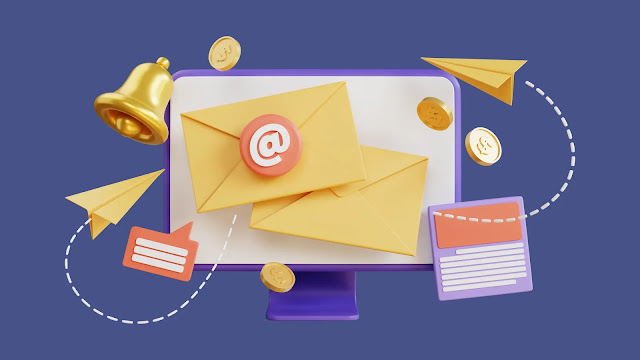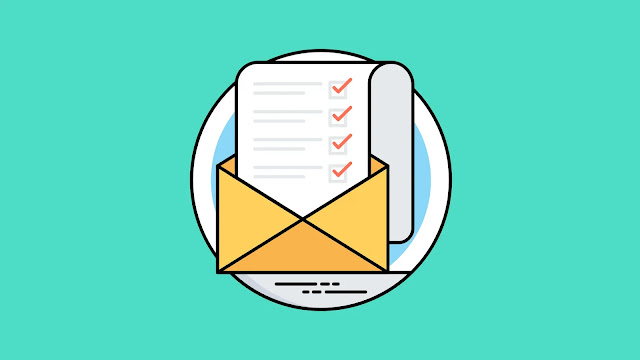Email Validation Best Practices: A Step-by-Step Guide for Marketers
Introduction
Email validation is the process of verifying that an email address is valid and deliverable.
This is an essential step in any email marketing campaign, as it can help to improve deliverability rates, reduce bounce rates, and protect your sender's reputation.
The Significance of Email Validation in Marketing Campaigns
There are many benefits to validating your email lists, including:
Improved deliverability rates: Validated email addresses are more likely to be delivered to the recipient's inbox. This is because invalid or inactive email addresses can cause your emails to be bounced back, which can damage your sender's reputation.
Reduced bounce rates: A high bounce rate can indicate that you are sending emails to invalid or inactive email addresses. This can also damage your sender's reputation and get your emails marked as spam.
Protected sender reputation: Your sender reputation is a measure of how trustworthy you are as an email sender. A good sender reputation will help your emails get delivered to inboxes, while a bad sender reputation can get your emails blocked or sent to spam folders.
Improved campaign performance: By validating your email lists, you can ensure that your emails are reaching the right people. This can lead to improved open rates, click-through rates, and conversions.
Reduced costs: Email marketing is a cost-effective way to reach your target audience. However, if you are sending emails to invalid or inactive addresses, you are wasting money. Validating your email lists can help you to reduce your email marketing costs.
Common Email Marketing Challenges
There are a number of common challenges that email marketers face, including:
Invalid email addresses: This is the most common email marketing challenge. Invalid email addresses can be caused by typos, outdated addresses, or fake email addresses.
Inactive email addresses: Inactive email addresses are email addresses that are no longer in use. This can be due to a number of factors, such as the recipient changing their email address or no longer using the internet.
Spam traps: Spam traps are email addresses that are set up to catch spammers. If you send emails to spam traps, it can damage your sender's reputation.
Honey pots: Honey pots are web forms that are designed to catch spammers. If you submit a form with an invalid email address, it can be flagged as spam.
Email Validation Best Practices
There are a number of best practices that you can follow to improve your email validation efforts, including:
Use real-time email validation: Real-time email validation can help you to catch invalid email addresses as they are entered so that you can prevent them from being added to your list.
Use a reputable email validation service: There are a number of reputable email validation services available that can help you verify your email lists.
Combine multiple verification methods: No single email validation method is perfect, so it is best to use a combination of methods to get the most accurate results.
Maintain your email lists: It is important to regularly maintain your email lists to remove invalid and inactive addresses.
Use double opt-in: Double opt-in is a process that requires subscribers to confirm their email address before they are added to your list. This can help to reduce the number of invalid email addresses on your list.
Use a reputable email marketing platform: A reputable email marketing platform will have built-in email validation features.
Monitor your email deliverability rates: You should regularly monitor your email deliverability rates to identify any problems with your email lists.
Understanding Email Validation
What is Email Validation?
Definition and Purpose
Email validation is the process of verifying that an email address is valid and deliverable. This involves checking for syntax errors, typos, and whether the email address exists on a real domain. Email validation is an essential part of any email marketing campaign, as it can help to improve deliverability rates, reduce bounce rates, and protect your sender's reputation.
Why is Email Validation Important for Marketers?
Impact on Deliverability and Reputation
Email validation plays a crucial role in ensuring that your email marketing campaigns reach their intended recipients. Validated email addresses are more likely to be delivered to inboxes, while invalid addresses can cause emails to bounce back. Bounced emails not only fail to reach their intended recipients but also negatively impact your sender's reputation. A high bounce rate can signal to email providers that you are sending spam, leading to your emails being filtered into spam folders or even blocked altogether.
Reduction in Bounce Rates
Bounce rates are a significant concern for email marketers, as they indicate the proportion of emails that fail to reach their intended recipients. High bounce rates can negatively impact your sender's reputation and overall campaign performance. Email validation helps to reduce bounce rates by identifying and removing invalid email addresses from your mailing list, ensuring that your emails reach the right people, and minimizing delivery issues.
Improving Engagement Rates
By validating your email lists, you can ensure that your emails are reaching real people who are interested in your content. This can lead to improved engagement rates, as your emails are more likely to be opened, clicked on, and acted upon. When you send emails to a list of validated email addresses, you are targeting a receptive audience, increasing the likelihood of positive interactions and conversions.
The Consequences of Ignoring Email Validation
High Bounce Rates: The Silent Campaign Killer
In the realm of email marketing, bounce rates serve as a critical indicator of campaign effectiveness. A high bounce rate, exceeding industry standards, can significantly hinder your marketing efforts, rendering them ineffective and even counterproductive. Ignoring email validation inevitably leads to an accumulation of invalid addresses on your mailing list, which in turn contributes to a surge in bounce rates.
These bounced emails not only fail to reach their intended recipients but also carry detrimental consequences for your sender's reputation. Email providers closely monitor bounce rates, and a consistently high rate can flag you as a potential spammer. This can result in your emails being filtered into spam folders or even blocked altogether, effectively silencing your marketing efforts.
Spam Complaints and Reputation Damage
As an email marketer, maintaining a positive sender reputation is paramount. This reputation reflects your trustworthiness and compliance with email best practices. Ignoring email validation can lead to an increase in spam complaints, which directly tarnishes your sender's reputation.
When recipients receive emails they deem irrelevant or unsolicited, they may mark them as spam. A surge in spam complaints signals to email providers that your emails are unwanted and potentially harmful. This can result in your emails being filtered into spam folders or blocked entirely, even for those who are genuinely interested in your content.
A damaged sender reputation can have far-reaching consequences, extending beyond email marketing. It can affect your overall brand image, making it difficult to reach your target audience through any channel. Therefore, maintaining a positive sender reputation is essential for long-term success.
Legal Implications: Compliance with Anti-Spam Laws
Email marketing is governed by various anti-spam laws, such as the CAN-SPAM Act in the United States and the GDPR in Europe. These regulations aim to protect consumers from unsolicited and intrusive emails. Ignoring email validation can inadvertently lead to non-compliance with these laws, exposing you to potential legal repercussions.
Sending emails to invalid addresses, without prior consent, can be considered a violation of anti-spam laws. This can result in fines, lawsuits, or even damage to your brand reputation. To ensure compliance and avoid legal issues, it is crucial to implement proper email validation practices.
Wasted Resources: Costs of Sending to Invalid Addresses
Every email you send incurs costs, whether it's the time spent crafting the content, the resources used for sending, or the potential revenue lost from undelivered messages. Ignoring email validation leads to a significant waste of these resources, as a substantial portion of your emails will fail to reach their intended recipients.
When you send emails to invalid addresses, you are essentially throwing money away. You are paying for the delivery of emails that will never be read, leading to a loss of potential leads, customers, and revenue. Email validation helps you eliminate these wasted expenses by ensuring that your emails are only sent to valid and active addresses.
How Email Validation Works
Syntax Verification: Checking Basic Email Format
The first step in email validation is syntax verification, which checks whether the email address adheres to the correct format. This involves examining the structure of the address, ensuring that it contains the following essential elements:
Local Part: The portion of the address before the '@' symbol, typically representing the username or mailbox name.
At Sign (@): The delimiter separates the local part from the domain name.
Domain Name: The portion of the address after the '@' symbol, identifying the email provider or organization.
Top-Level Domain (TLD): The suffix at the end of the domain name, such as '.com', '.net', or '.org'.
Syntax verification ensures that the email address follows the basic structural rules and has the correct components.
Domain Verification: Validating DNS Records
Once the syntax is confirmed, the next step is to verify the existence of the domain name associated with the email address. This involves checking the Domain Name System (DNS) records to ensure that the domain is registered and active.
The validation process queries DNS servers to retrieve information about the domain, such as its existence, ownership, and mail exchanger (MX) records. If the domain is valid and has the necessary MX records, it can potentially accept and deliver emails.
MX Record Lookup: Verifying Mail Exchanger Records
MX records are crucial for email delivery, as they specify the mail servers responsible for receiving and handling emails for that domain. Validating MX records ensures that the domain has the necessary infrastructure to receive and process emails.
During the validation process, MX records associated with the domain are retrieved and checked for validity. If the MX records are valid and point to functioning mail servers, it indicates that the domain can accept and deliver emails.
SMTP Verification: Establishing Server Existence
SMTP verification involves attempting to establish a connection with the mail server specified by the MX records. This is done using the Simple Mail Transfer Protocol (SMTP), the standard protocol for sending emails.
By attempting to connect to the mail server, the validation process can determine whether the server is active and accepting emails. If a successful connection is established, it indicates that the email address is likely deliverable.
Role Account Detection: Identifying Generic Addresses
Role accounts, such as 'info@', 'sales@', or 'support@', are often used for general inquiries and may not be associated with specific individuals. Identifying these role accounts can help marketers tailor their messaging and avoid sending irrelevant emails to non-personal accounts.
Role account detection algorithms analyze email addresses and identify patterns that suggest they are generic or non-personal. This information can be used to segment mailing lists and ensure that messages are targeted to the most relevant recipients.
Selecting the Right Email Validation Service
Key Features to Look For
Choosing the right email validation service is crucial for ensuring the effectiveness of your email marketing campaigns. With numerous options available, it's important to consider specific features that align with your needs and preferences. Here are some key factors to consider when selecting an email validation service:
Real-Time Verification
Real-time verification allows you to validate email addresses as they are entered, preventing invalid addresses from being added to your mailing list in the first place. This can significantly reduce bounce rates and improve the accuracy of your email lists.
Bulk Processing Capabilities
If you manage large mailing lists, it's essential to choose a service that can handle bulk processing efficiently. The service should be able to validate multiple email addresses simultaneously without compromising accuracy or speed.
Integration Options
The service should offer seamless integration with your existing marketing automation platform or email marketing software. This allows you to integrate email validation directly into your workflow, streamlining the process and eliminating manual data entry.
Data Security and Compliance
Ensure the service adheres to strict data security and privacy standards. The service should implement robust security measures to protect your data and comply with relevant regulations like GDPR and CCPA.
Pricing and Plans
Evaluate the pricing plans offered by different providers and choose the one that best suits your budget and volume requirements. Some services offer tiered plans based on the number of email addresses you need to validate.
Customer Support
Choose a service with responsive and knowledgeable customer support. This ensures that you have assistance if you encounter any issues or need help with the service's features.
Free Trials or Demos
Many email validation services offer free trials or demos to allow you to test their features and evaluate their performance before committing to a paid plan. Take advantage of these opportunities to ensure the service meets your expectations.
Industry Reputation and Reviews
Consider the reputation of the service provider and read reviews from other users to gain insights into their experience and satisfaction with the service. This can provide valuable feedback and help you make an informed decision.
Popular Email Verification Tools in the Market
Here are three popular email verification tools in the market, along with their key features and benefits:
1. NeverBounce
Features:
Real-time email verification
Bulk processing capabilities
Integration with popular marketing platforms
Data security and compliance with GDPR and CCPA
Detailed reporting and analytics
Customizable catch-all and disposable email detection
Benefits:
Improves deliverability and reduces bounce rates
Cleans and maintains accurate email lists
Protects sender's reputation and prevents spam complaints
Saves time and resources by eliminating manual verification
Provides insights into email list quality and trends
2. Bouncer
Features:
Real-time email verification
Bulk processing capabilities
Integration with various email marketing software
Data security and compliance with GDPR and CCPA
Customizable role account detection
Comprehensive verification reports
Benefits:
Enhances email campaign performance
Eliminates invalid and inactive email addresses
Protects sender reputation and prevents spam filtering
Streamlines email list management and reduces costs
Provides detailed information on email address status
3. ZeroBounce
Features:
Real-time email verification
Bulk processing capabilities
Integration with multiple email marketing platforms
Data security and compliance with GDPR and CCPA
Abuse detection and spam trap identification
Customizable verification rules and filters
Benefits:
Boosts email deliverability and engagement
Maintains a clean and healthy email list
Protects sender reputation and avoids spam penalties
Enhances overall email marketing ROI
Provides actionable insights into email list quality
These three email verification tools offer a comprehensive set of features to help businesses improve their email marketing campaigns, reduce bounce rates, protect sender reputations, and maximize campaign effectiveness. The specific tool you choose will depend on your individual needs, budget, and preferred integration options.
Integrating Email Validation Into Your Marketing Workflow
Many email service providers (ESPs) offer built-in email validation capabilities, allowing you to integrate email validation directly into your email marketing workflow. This eliminates the need to use a separate validation service and streamlines the process of managing and verifying your email lists.
Step-by-Step Guide for Popular ESPs
Here's a step-by-step guide for integrating email validation into popular ESPs:
1. Mailchimp:
Go to your Mailchimp account settings.
Navigate to the "Lists" section.
Select the list you want to validate.
Click on the "Clean List" option.
Choose the "Verify List" option.
Mailchimp will send verification emails to the addresses in your list.
You can view the verification results in the "List Activity" section.
2. ActiveCampaign:
Log in to your ActiveCampaign account.
Go to the "Lists" section.
Select the list you want to validate.
Click on the "List Actions" button.
Choose the "Validate Emails" option.
ActiveCampaign will verify the email addresses in your list.
You can view the verification results in the "List Activity" section.
3. ConvertKit:
Access your ConvertKit account.
Navigate to the "Subscribers" section.
Select the list you want to validate.
Click on the "Actions" button.
Choose the "Validate Emails" option.
ConvertKit will verify the email addresses in your list.
You can view the verification results in the "Subscriber Activity" section.
API Integration for Customized Workflows
If you have more advanced requirements or want to integrate email validation into your own custom workflows, you can utilize the API provided by many email validation services. This allows you to automate the verification process and integrate it directly into your existing systems and applications.
Benefits of API Integration:
Automation: Automate the email validation process, eliminating manual data entry and saving time.
Customization: Integrate email validation into your specific workflows and systems.
Scalability: Handle large volumes of email addresses efficiently.
Real-time Validation: Validate email addresses as they are collected or entered.
Error Handling: Manage and process invalid email addresses effectively.
How to Implement API Integration:
Choose an email validation service with a robust API: Select a provider that offers an easy-to-use and well-documented API.
Review API documentation and requirements: Carefully review the API documentation to understand the available endpoints, parameters, and response formats.
Develop API integration code: Write code to connect to the API, send verification requests, and process response data.
Test and refine integration: Thoroughly test the integration to ensure accurate and reliable email verification.
Monitor and maintain integration: Continuously monitor the integration's performance and make adjustments as needed.
Best Practices for Email List Acquisition
Permission-Based Opt-Ins: Building a Quality Subscriber Base
Building a quality email list starts with obtaining explicit permission from individuals to receive your emails. Permission-based opt-ins ensure that you are sending emails to people who are genuinely interested in your content, leading to higher engagement rates and a positive sender reputation.
Double Opt-In Processes
Double opt-in is a crucial step in building a high-quality email list. This process requires subscribers to confirm their email address after initially signing up. This double verification ensures that the email address is valid and that the subscriber genuinely wants to receive your emails.
Opt-In Incentives
Providing incentives for opting into your email list can encourage more people to subscribe and provide their contact information. Consider offering discounts, exclusive content, or early access to new products or promotions in exchange for their subscription.
Segmentation and Targeting for Better Results
Once you have a sizable email list, it's important to segment your subscribers into smaller, more targeted groups based on their interests, demographics, or behaviors. This allows you to send personalized and relevant emails that are more likely to resonate with each group.
Personalization and Relevance
Personalizing your emails by addressing subscribers by name and tailoring content to their specific interests can significantly improve engagement rates and conversions. Use segmentation data to send relevant emails that address the needs and preferences of each group.
Creating Customer Personas
Developing detailed customer personas can help you better understand your target audience and create more effective email campaigns. These personas should outline the characteristics, interests, and pain points of your ideal customers, allowing you to craft personalized messages that resonate with them.
Regular Maintenance of Email Lists
Implementing a Cleaning Schedule
Regular maintenance of your email lists is essential to ensure their accuracy, deliverability, and overall effectiveness. A clean email list is free of invalid, inactive, or spam traps, leading to improved campaign performance, a better sender reputation, and reduced costs.
Frequency Recommendations
The frequency of your email list cleaning depends on the size of your list, the rate of subscriber changes, and your email marketing goals. As a general guideline, it's recommended to clean your email lists at least every three to six months.
Handling Inactive Subscribers
Inactive subscribers are those who have not opened or clicked on any of your emails in a certain period, typically 90 days or more. While it's not uncommon to have some inactive subscribers, it's important to address them to ensure the overall health of your list.
Re-Engagement Strategies
Before removing inactive subscribers, consider implementing re-engagement strategies to win back their interest. Send them a re-engagement campaign with personalized content, exclusive offers, or surveys to gauge their preferences.
Dealing with Temporary Bounces vs. Permanent Bounces
Bounces occur when an email is undeliverable due to various reasons. It's important to distinguish between temporary bounces (soft bounces) and permanent bounces (hard bounces) to take appropriate action.
Temporary Bounces (Soft Bounces)
Soft bounces indicate temporary delivery issues, such as a full mailbox or server downtime. These addresses should be retried after a specified period.
Permanent Bounces (Hard Bounces)
Hard bounces indicate permanent delivery failures, such as invalid email addresses or accounts that no longer exist. These addresses should be removed from your list to prevent future bounces and protect your sender's reputation.
The Role of Email Validation in GDPR and CAN-SPAM Compliance
Ensuring Compliance with Data Privacy Regulations
Email validation plays a crucial role in ensuring compliance with data privacy regulations, particularly the General Data Protection Regulation (GDPR) in the European Union. By verifying email addresses, businesses can obtain and maintain valid consent for processing personal data, protect individual privacy rights, and avoid potential penalties for non-compliance.
GDPR Essentials for Marketers
Under GDPR, businesses must obtain explicit consent from individuals before sending them marketing emails. Email validation helps to ensure that this consent is valid and that emails are only sent to individuals who have knowingly agreed to receive them.
Adhering to Anti-Spam Laws: CAN-SPAM Act Guidelines
The CAN-SPAM Act in the United States regulates commercial email marketing and prohibits sending unsolicited emails. Email validation helps businesses comply with the CAN-SPAM Act by identifying and removing invalid or inactive email addresses, reducing the likelihood of sending emails to individuals who have not opted-in.
Key Points for Compliance:
Obtain Explicit Consent: Clearly and unambiguously obtain consent from individuals to receive marketing emails.
Provide Opt-Out Options: Provide clear and easy-to-use opt-out mechanisms for subscribers to unsubscribe from your mailing lists.
Honor Opt-Out Requests: Promptly and effectively process opt-out requests to remove individuals from your mailing lists.
Identify and Suppress Invalid Addresses: Regularly validate email addresses to identify and suppress invalid or inactive addresses from your mailing lists.
Maintain Accurate Records: Maintain accurate records of consent, opt-out requests, and email validation processes to demonstrate compliance with regulations.
Conclusion
Email validation is an essential tool for any email marketer who wants to improve their deliverability rates, protect their sender reputation, and maximize the effectiveness of their email campaigns. By verifying email addresses, businesses can ensure that their emails are reaching real people who are interested in their content.
Recap of Email Validation Benefits
Improved Deliverability Rates: Validated email addresses are more likely to be delivered to inboxes, leading to better campaign performance.
Reduced Bounce Rates: Email validation helps to identify and remove invalid email addresses, preventing bounced emails that can damage sender reputations.
Enhanced Engagement Rates: By sending emails to valid addresses, you can reach a receptive audience, increasing the likelihood of opens, clicks, and conversions.
Protected Sender Reputation: Maintaining a positive sender reputation is crucial for email marketing success. Email validation helps to prevent spam complaints and protect your reputation.
Compliance with Anti-Spam Laws: Email validation helps you comply with data privacy regulations and anti-spam laws, avoiding potential penalties.
Taking Action: Implementing Email Validation in Your Marketing Strategy
To implement email validation into your marketing strategy, consider the following steps:
Choose an Email Validation Service: Select a reputable email validation service that offers features and integrations that align with your needs.
Validate Your Existing Lists: Validate your existing email lists to remove invalid or inactive addresses and improve list quality.
Implement Real-Time Verification: Integrate real-time email validation into your email capture forms to prevent invalid addresses from being added to your lists.
Monitor and Maintain Lists: Regularly monitor your email lists for changes in validity and remove invalid addresses promptly.
Utilize Segmentation and Targeting: Segment your email lists based on interests and demographics to send personalized and relevant messages that resonate with each group.
Implement Permission-Based Opt-Ins: Obtain explicit consent from individuals before adding them to your email lists to ensure compliance and build trust.
Monitor Campaign Performance: Track email campaign performance metrics, such as open rates, click-through rates, and conversions, to measure the effectiveness of your email validation efforts.
By following these guidelines and implementing email validation effectively, you can transform your email marketing efforts, reach the right audience, and achieve your marketing goals.


.webp)










